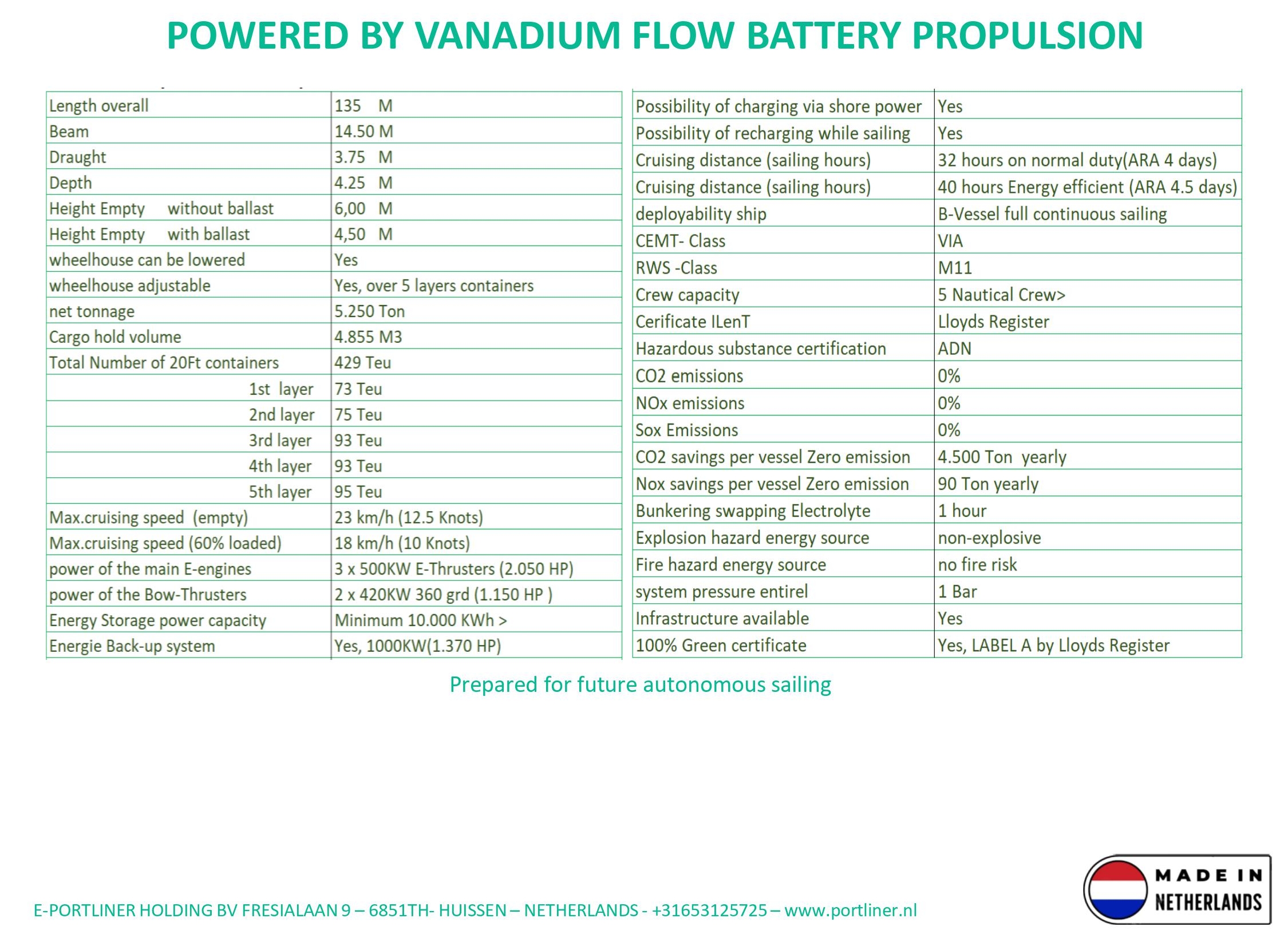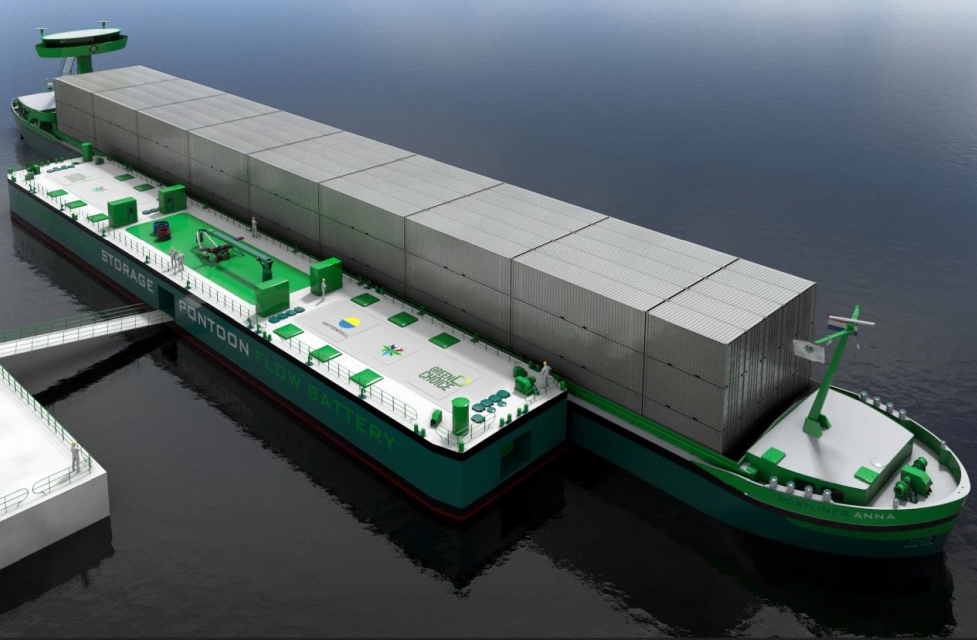PortLiner intends to build two 135 x 14.50 m (429 TEU) inland waterway ships of the PortLiner “DUTCH” design. The company has now received a recommendation from Lloyd’s Register for the concept flow battery on board these inland vessels, which allows zero-emission operations.
The ships will be equipped with a 1500 kW electrical main propulsion, and an 840 KW electrical bow thruster. The electrical energy will be provided by a flow battery from the Austrian manufacturer Cellcube-Enerox. The flow battery system will have a maximum output of 3×500 KW with an electrolyte energy storage of 10,000 kWh.
In addition to being zero-emission, the vessels will also be prepared for future autonomous sailing.
Also read: CellCube and Portliner to build flow battery solution for all-electric inland vessel
E-Storage bunkering pontoon
PortLiner will also develop its own infrastructure by building an “E-Storage” bunkering pontoon, which will be located in the Hartelkanaal in the Port of Rotterdam. The PortLiner ships will exchange the electrolyte by pumping the decharged electrolyte to the bunkering pontoon and pumping the charged electrolyte to the ships. The ships can also be charged through a shore connection.
Both the ships and the pontoon will be certified by Lloyd’s Register against class Rules, ES-TRIN and ADN requirements.
Emission label A
With the development of these ships PortLiner will contribute to the greening of the inland waterway fleet as the ships will generate zero emissions. Based on the received technical specification of the system electrolyte, the inland vessel will receive an emission label A.
The features of the PortLiner DUTCH vessel design are:

Also read: SWZ|Maritime’s April 2022 inland navigation special: Bio-LNG, H2, CH3OH or with batteries








